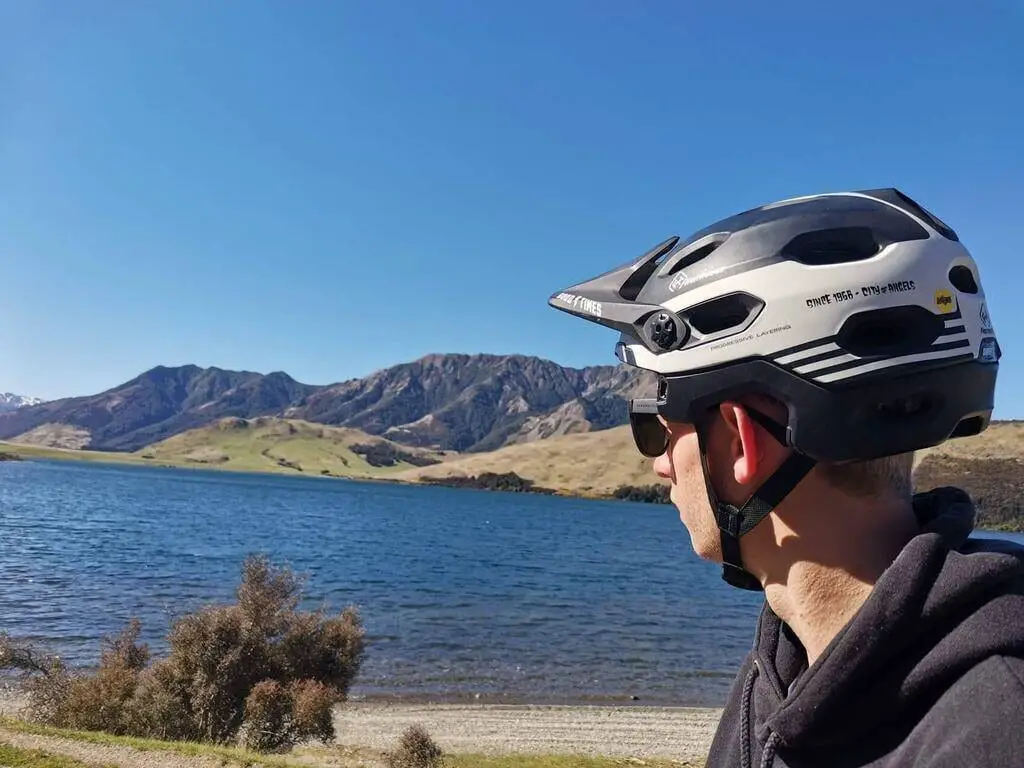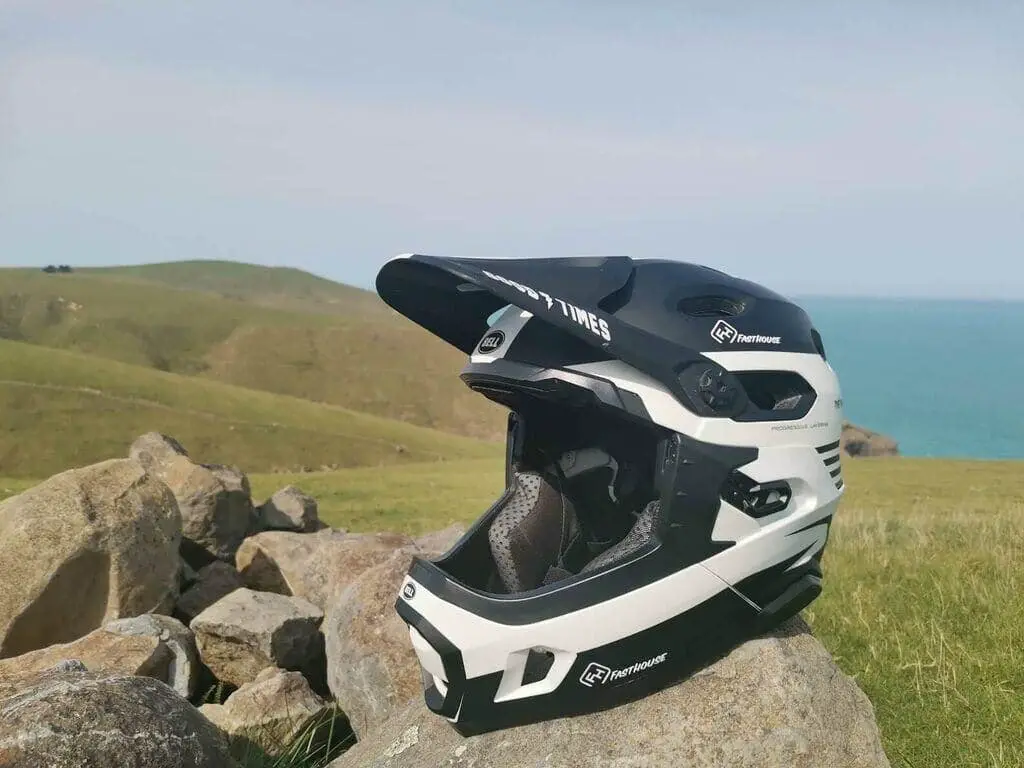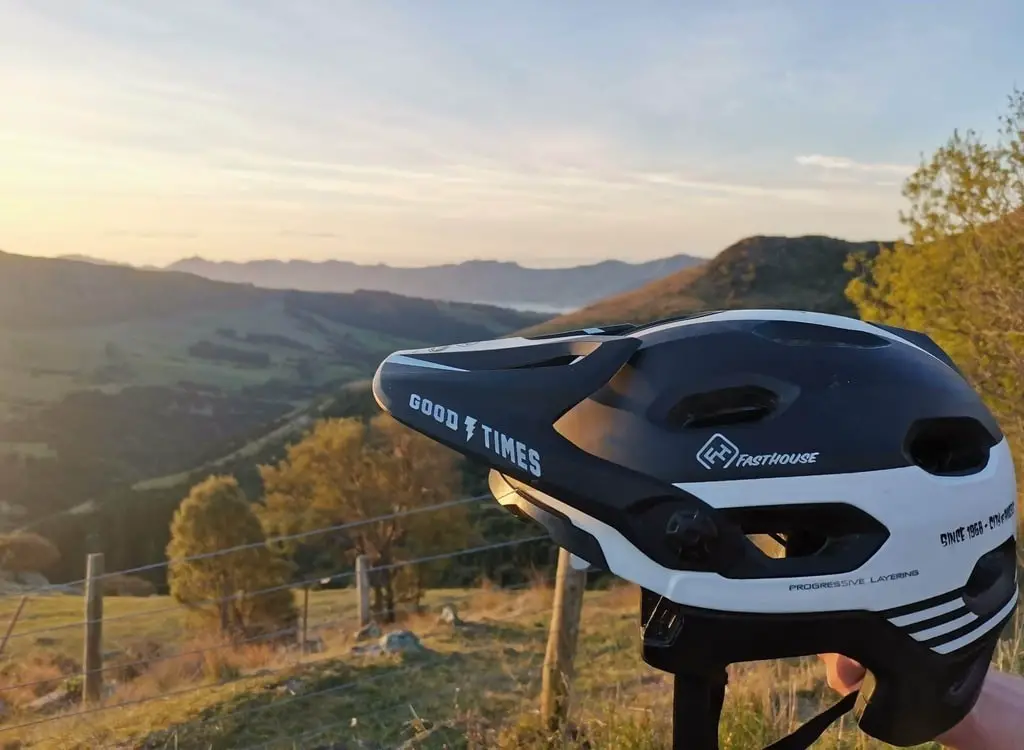Here we have two very good convertible helmets in the market from Bell. We will look at the Super 3R vs the Super DH, and determine in which scenarios each helmet performs better.
Since 1954 Bell has been creating top-quality helmets made for those wanting stylish, safe helmets. Both the Super DH and Super 3R have been made for those wanting to take their riding to the next level and ride with confidence that their head will be kept safe.
Why Choose a Convertible MTB Helmet?
The mountain biking community has acknowledged the versatility of the convertible helmets. More riders are taking the opportunity to have two exceptional helmets, for the price and convenience of one helmet. You can ride freely up hills without the added weight of the chin bar. Then ride down with the protection that the chin bar provides for the face.
Additionally, convertible helmets are typically lighter and more breathable than typical full downhill helmets are. It really is the best of both worlds!
Personally, I have ridden with a convertible helmet for the past few years, and I can’t see myself going back! Having the convenience of biking out to the park with the chin bar in my bag or around the handlebars, then reattaching it once I’m at the top, is worth the additional price. It also meant that I didn’t need to buy two helmets. I have one for hitting the advanced lines and another for riding the long trails.
Bell Super 3R Mini Review
Strong suit: Ventilation and Value
Weight – 784g (a bit lighter than the Super DH)
Downhill Certified – No
Rotational Impact System – MIPS
Well ventilated, very light, and very comfortable. This is the ideal helmet for the typical rider, not riding the extreme lines at extreme speeds, but wanting more protection than an open-face helmet can provide.
Pros
- Light
- Comfortable
- Well Ventilated
- Excellent price
Cons
- Not Downhill Certified
The Bell Super 3R follows the Super 2R, with a few adjustments to make it more comfortable and lighter. It is pretty much aimed at riders who currently own an open face but would feel safer with the protection of a chin-bar- but don’t need a full face for a lot of their riding.
The chin bar is light and breathable, whilst also being sturdy and strong in the event of a collision. The Bell Super 3R is not downhill-certified, but meets the typical helmet regulations. It is effectively a ‘barely-there’ chin bar on an exceptional open face helmet for when you want it!
Bell Super DH Mini Review
Best Overall
Weight – 850g
Downhill Certified – Yes
Rotational Impact System – MIPS Spherical
Bringing together the best of both worlds, a detachable chin bar makes for an easy climb and a safe descent. For the price of one, you get a top-of-the-line open face helmet and a fully certified downhill helmet that is comfortable, durable, and easy to use.
Pros
- Light
- Comfortable
- Well Ventilated
- MIPS Spherical
- Downhill Certified
Cons
- Heavier than the 3R
The Bell Super DH is the successor of the Bell Super 3R. It has taken the basic idea of the 3R and evolving it into a more advanced, downhill-certified helmet. The Super DH is pretty much ideal for pretty much any rider out there.
Having the downhill certification basically means it’s a little bulkier than the 3R. But it also has a few more safety features in order to meet the downhill testing criteria.
The helmet is breathable, lightweight and provides an excellent option for a rider who enjoys heading out on park laps (where the chin bar is needed) as well as long trail rides (where the chin bar is not so necessary).
Design and Construction Comparison
Despite the same team of designers (I’m guessing) working on the helmet, the style of the two lids is very different. Visibly, the chin bar on the Super 3R is longer and thinner, and there are quite a few more vents on the helmet. The Super DH looks a bit more serious; the visor is a bit longer, and the buckle where the chin bar attaches is a bit more discrete.
You will find that both helmets are constructed using in-mold technology. This means the outer polycarbonate shell is molded to the foam layer, creating a studier, more durable helmet. But that’s where the similarities in construction stop.
The Super 3R has the outer shell bonded to the EPS (Expanded Polystyrene) foam layer. Then inside that layer is the MIPS slip-plane layer which works to reduce rotational forces from angular impacts.
The Super DH has two foam layers. The outer shell is bonded to the outer EPS foam layer, and inside that is the EPP (Expanded Polypropylene) foam layer. This creates the MIPS Spherical system, which will be further explained under the safety comparison.
Safety Comparison
In terms of comparing the Super 3R vs Super DH, the DH wins in the safety aspect.
As stated earlier, the Super 3R is not downhill-certified. It is still certified to normal helmet standards (CPSC) which all helmets must meet to be sold in the US, UK, Australia, New Zealand and so on. And it also has the additional benefits of MIPS (Multi-directional Impact System) and the chin bar when in use.
The Super DH is Downhill-Certified and features the well-designed MIPS Spherical. MIPS Spherical works by having the two foam layers (EPP and EPS) and an invisible, low friction layer between them. This creates a ‘ball and socket’ type movement. In doing so, it allows the outer layer to move in an angled crash.
This reduces the amount of energy which is transferred to the rider’s head. The other advantage of this system is that the combination of the EPS and EPP layers reduce the energy over a much wider range of impacts. High speed and low-speed crashes will be reduced by the foam layers and the MIPS system.
Both helmets have good coverage around the rear of the head, which prevents back hits to the back of the skull in a crash. It also stops sticks or stones harming the back of your head.
Ventilation and Weight Comparison
The Bell Super 3R has a very good ventilation system, with 23 vents on the helmet, including an over brow port which takes the air in as you ride and circulates it through the helmet. It also has six vents on the chin bar to ensure that part of the head doesn’t get too warm either.
The Bell Super DH has slightly fewer vents, 19 on the shell, and two over brow ports. There are four vents on the chin bar too. The advantage of the Super DH is that the gap between the two foam layers allows for air to circulate through the helmet, creating a very efficient cooling system. The air taken in through the ports circulates through the gap, keeping your head cool even when in full-face mode. There is also a sweat guide pad which is designed to pull the sweat that builds up on the brow pad away from the front of the helmet. It then doesn’t go near your eyes or eyewear.
The Super 3R is lighter than the Super DH, but only just. For a size medium, with the chin bar attached, the Super 3R weighs in at 784g whereas the Super DH is ~66 grams heavier at 850 g. You will likely notice that these are two very light full-face helmets! Fox’s Rampage Pro Carbon Full face weighs in at 1,220 g for a small to medium size, and one of the lightest downhill-certified helmets- the Troy Lee Designs D4 at 960g.
Comfort Comparison
In terms of comfort, you will be hard-pressed to find reasons not to get either of the helmets. Both have the Float Fit system, which is a nice lightweight fitting retention system with an easy-to-turn rubber dial for the perfect fit every time.
The padding inside the helmets is unbelievably soft, called the X-static padding, which dries quickly and reduces odors. Having used the Super DH for over a year now, I can safely say that the padding is very durable- as is everything else on the helmet.

Features Comparison
The features of the two helmets are effectively the same when comparing the Super 3R vs Super DH. Both have adjustable visors, which lift enough to store goggles or glasses underneath for the climb. Additionally, the two helmets have integrated camera mounts.
The two helmets both have the ‘No-Twist Tri-Glides’. These prevent the chin straps from getting tangled, making it very simple to do up the chin straps. Making it even easier, both helmets have the Fidlock magnetic buckle, which is a revolutionary design to the classic buckle. It creates a very secure locking system which simply snaps together, and its simple to undo- just by sliding or twisting the magnet.
Attaching and removing the chin bar is also very easy. It can be done with the helmet still on your head and requires a three-step clip or buckle type system. The chin bar is very securely attached and is a very robust design, so you won’t lose a chin bar in a crash.
Conclusion
Bell has really made a name for itself in recent years, providing extremely good quality helmets that actually meet the needs of the riders. The two helmets appeal to different types of riders, but it can be a little confusing as to which riders they appeal to sometimes!
The Bell Super 3R appeals to the rider who wants a step up from the traditional open face, with a little more protection around the face. It was never a helmet designed for tackling the expert lines at blistering speeds. It is designed more for someone who feels a little exposed at times. Times where a chin bar would be a nice safety guard, but a full face is more discomfort than required!
The Bell Super DH is for someone who likes the downhill riding and bike park laps, as the downhill certification can give the rider confidence while sending it down the tracks. Having the ability to remove the chin bar when it is not necessary, such as riding uphill or cruising on the easier tracks is very handy. It is an exceptionally well-designed helmet. The ventilation, weight, safety and design are all well thought through and are integrated perfectly to form a great performing lid.

It depends on your style of riding and your needs of protection when comparing the Super 3R vs Super DH. In our opinion, you cannot go wrong with the Bell Super DH. For a slightly higher price, you get a sturdier helmet, just as well ventilated, barely any heavier, and it comes with the superior MIPS Spherical.
Other Helmets to Consider
Another excellent helmet to consider is the Bell Super Air R. See the comparison between the Super Air R and the Super DH here.
If you are still can’t decide, see the four Best Convertible Mountain Bike Helmets or Leatt DBX 3.0 vs Bell Super 3R.


